MARIANI’SVirtual
Gourmet
November 10 2013
NEWSLETTER
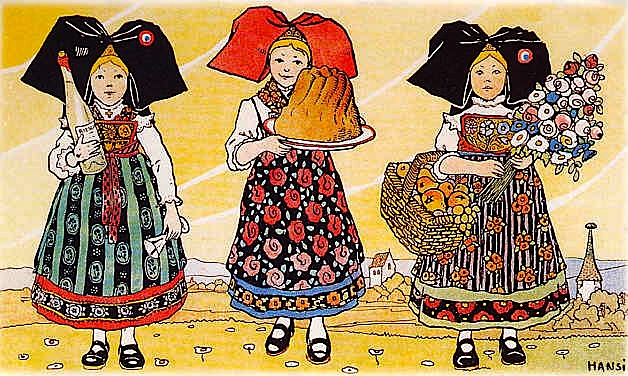
❖❖❖
THIS WEEK
ATLANTIC CITY BOUNCES BACK
by Christopher Mariani
NEW YORK CORNER
Café Centro
by John Mariani
HUFFINGTON POST: STELLA 34 TRATTORIA
by John Mariani
❖❖❖
by Christopher Mariani

I spent a fair number
of weekends in Atlantic City when I was young,
partying at nightclubs, gambling
and attending a handful of the city’s posh pool
parties. Then I stayed
exclusively at either the Borgata or Harrah’s,
because, well, let’s be honest,
the other AC hotels are not exactly that
fashionable, with the exception of the
new Revel Hotel, which I am personally not a fan
of due to a poor layout and almost
sinister atmosphere. I’ve always felt the Borgata,
with the addition of their
new Water Club tower, was the closest thing to the
“new” Vegas in Atlantic
City. In my former view, Atlantic City was always
a poor imitation of the west’s
Las Vegas.
It was not until a recent trip
to Atlantic City
that I realized the city had something to offer
that Las Vegas physically never
could: a  wonderful
seaside experience with an endless array of
not-so-sinful
options. Unless you consider a deep-fried snickers
bar sinful.
wonderful
seaside experience with an endless array of
not-so-sinful
options. Unless you consider a deep-fried snickers
bar sinful.
It was the end of the summer,
and for the first
time, I visited Atlantic City’s famous boardwalk
and saw a completely different
side of this boisterous city. My girlfriend and I
checked into the Resorts
Casino Hotel, located directly on the water,
fitted out with spacious rooms and
gorgeous views of the ocean and beach below. That
afternoon, we left the
casino, without
gambling, and set
foot on the city’s legendary wooden boardwalk,
which, contrary to assumptions,
was not badly damaged by Hurricane Sandy, as were
resort areas south of AC.
There were
funky clothing stores,
Atlantic City memorabilia shops, competing ice
cream vendors and storefront
after storefront of delicious, casual eateries,
all serving pizza, gyros packed
with savory sliced beef and oozing with tzatziki
sauce, hearty sandwiches, saltwater taffy, and
tantalizing deep-fried zeppoles coated with sweet powdered
sugar. We had a blast,
strolling down the boardwalk, popping into stores,
people watching and just soaking
up the sun’s rays. The boardwalk was buzzing with
young families as children begged
to go on rides and eat cotton candy. I was so
pleased to see this joyful slice
of Atlantic City that I never knew existed.
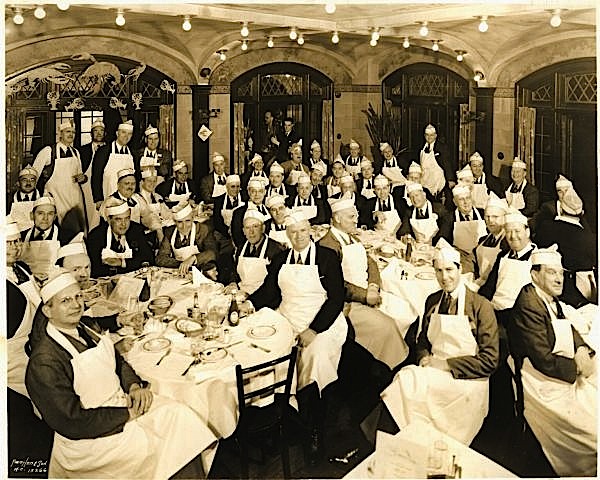 That
evening, before the Beyoncé concert at the
City Center, we dined at one of the city’s oldest
culinary establishments,
Knife
& Fork (left) whose doors opened in 1912
as a men’s drinking and dining
club, continuing through the roaring 1920’s, even
serving alcohol during Prohibition.
With recent renovations in 2005 (below), the
space looks better than ever and offers
massive cuts of grilled steak, plenty of seafood
options and lots of rich side
dishes, not much different than you would have
found on the menu decades
ago. Indeed,
Knife & Fork is
That
evening, before the Beyoncé concert at the
City Center, we dined at one of the city’s oldest
culinary establishments,
Knife
& Fork (left) whose doors opened in 1912
as a men’s drinking and dining
club, continuing through the roaring 1920’s, even
serving alcohol during Prohibition.
With recent renovations in 2005 (below), the
space looks better than ever and offers
massive cuts of grilled steak, plenty of seafood
options and lots of rich side
dishes, not much different than you would have
found on the menu decades
ago. Indeed,
Knife & Fork is
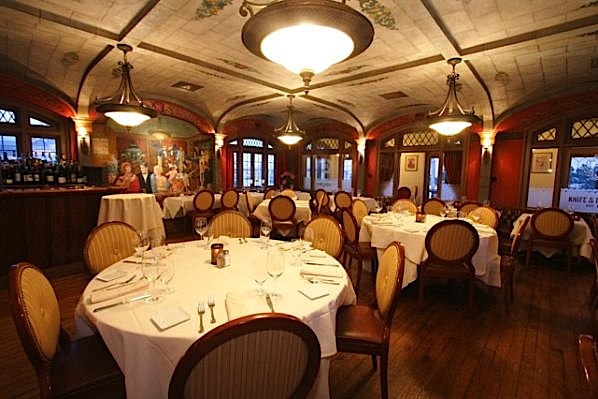 both a throwback and
something of a nostalgic trip at a time when the
casino
hotels are hiring celeb chefs by the dozen to
replicate their menus from
elsewhere.
both a throwback and
something of a nostalgic trip at a time when the
casino
hotels are hiring celeb chefs by the dozen to
replicate their menus from
elsewhere.
After
filling up at Knife & Fork, we were
chauffeured by limousine to the Beyoncé
concert where we spent the night star-struck, as
Beyoncé dazzled the audience,
proving herself one of the greatest live
performers of my generation.
On the
following sunny day, we had a great lunch at the
new Landshark Bar &
Grill, the first 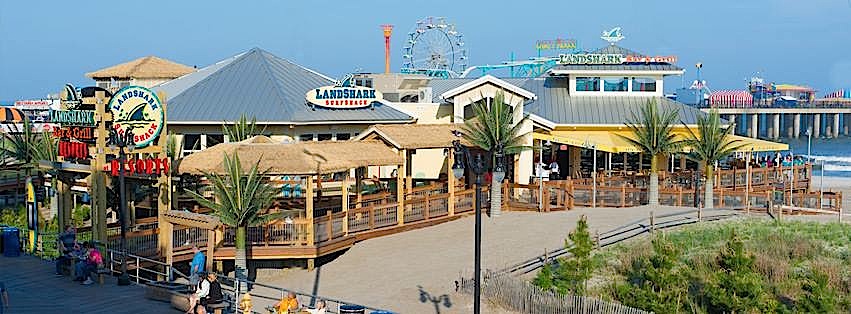 restaurant in AC to sit
directly on
the beach, looking out onto the ocean. Landshark
operates under the Margaritaville
brand and draws a laidback crowd of casual diners
looking for good seafood, a
burger and a few cold beers. The menu is extensive
and revolves around fish
sandwiches, chili cheese dogs, oysters and fried
shrimp. The space is mostly
all outdoors, centered around a bustling bar and
fixed with large yellow
Landshark umbrellas and long wooden tables. The
place is simply fun to be at
and worth a visit when staying along the
boardwalk.
restaurant in AC to sit
directly on
the beach, looking out onto the ocean. Landshark
operates under the Margaritaville
brand and draws a laidback crowd of casual diners
looking for good seafood, a
burger and a few cold beers. The menu is extensive
and revolves around fish
sandwiches, chili cheese dogs, oysters and fried
shrimp. The space is mostly
all outdoors, centered around a bustling bar and
fixed with large yellow
Landshark umbrellas and long wooden tables. The
place is simply fun to be at
and worth a visit when staying along the
boardwalk.
After an afternoon at leisure,
we got dressed
and headed to the Taj Mahal Resort Casino where we
dined at Robert’s
Steakhouse, (left) 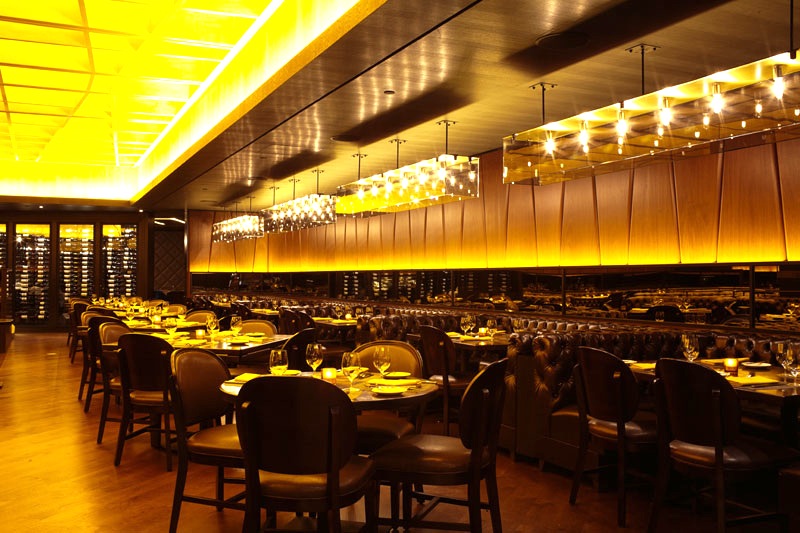 led by executive chef Will Savarese,
who has an impressive résumé,
having cooked at NYC’s La Côte Basque,
Aureole and Le Cirque in NYC, along with
Westchester County’s La Crèmaillére
and The Tap House in Tuckahoe before being
asked to run the kitchen at Robert’s. I had few
moments to chat with chef
Savarese, who told me the hotel owners spared no
expense and insisted he only
use the most excellent ingredients. He was
informed that the cost for the
best products were not to be a concern, a
conversation I’m sure most chef’s
would love to be part of when food costs are ever
rising and the ability for
restaurants to make a profit is getting more and
more difficult.
led by executive chef Will Savarese,
who has an impressive résumé,
having cooked at NYC’s La Côte Basque,
Aureole and Le Cirque in NYC, along with
Westchester County’s La Crèmaillére
and The Tap House in Tuckahoe before being
asked to run the kitchen at Robert’s. I had few
moments to chat with chef
Savarese, who told me the hotel owners spared no
expense and insisted he only
use the most excellent ingredients. He was
informed that the cost for the
best products were not to be a concern, a
conversation I’m sure most chef’s
would love to be part of when food costs are ever
rising and the ability for
restaurants to make a profit is getting more and
more difficult.
The
space is truly impressive, one of the few
restaurants in the city I could say
matches in quality and design those of Las Vegas’
finest. The room is extremely
masculine, dimly lighted with amber light, dressed
with wooden floors, large
dark wood tables and comfy black leather banquets.
Upon entry, there is a sexy
bar and lounge, staffed with beautiful women
dressed all in black, serving
martinis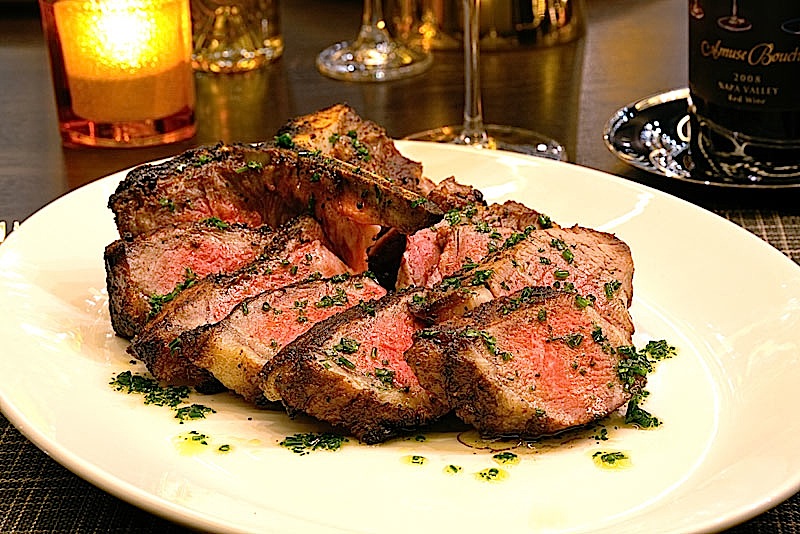 and Champagne to
well-dressed guests sitting or waiting for their
table. Once seated, we started with two glasses of
Champagne and a dozen east
and west coast oysters served with horseradish and
a mignonette sauce.
and Champagne to
well-dressed guests sitting or waiting for their
table. Once seated, we started with two glasses of
Champagne and a dozen east
and west coast oysters served with horseradish and
a mignonette sauce.
Then,
Japanese yellowtail sashimi with chili oil, ruby
red grapefruit and jalapeños,
along with Kobe beef carpaccio sided by arugula
salad dressed with truffle oil
and topped with Parmigiano-Reggiano cheese. For entrees, Robert’s offers
USDA Prime house dry-aged cuts
of beef, including a delicious porterhouse for
two, costing $110, before sides
like potato gratin with bacon; creamed spinach;
beer- battered onion rings with
malt vinegar, and rich and creamy macaroni and
cheese. If you still have room,
try the chocolate hazelnut “bomb” or the apple
crumb cobbler, two desserts you
will not soon forget.
Robert’s
wine list is a bit inflated in price and could use
some more reasonably
tariffed wines. The list itself is very
impressive, but for the average AC
diner, the price point is not at all modest.
I’ve dined around Atlantic City
and had some
very good meals, but not until visiting Robert’s
did I experience a truly great
meal. As far as I’m concerned, Robert’s Steakhouse
sets the bar for the
Atlantic City dining scene.
❖❖❖
NEW YORK CORNER
by John Mariani
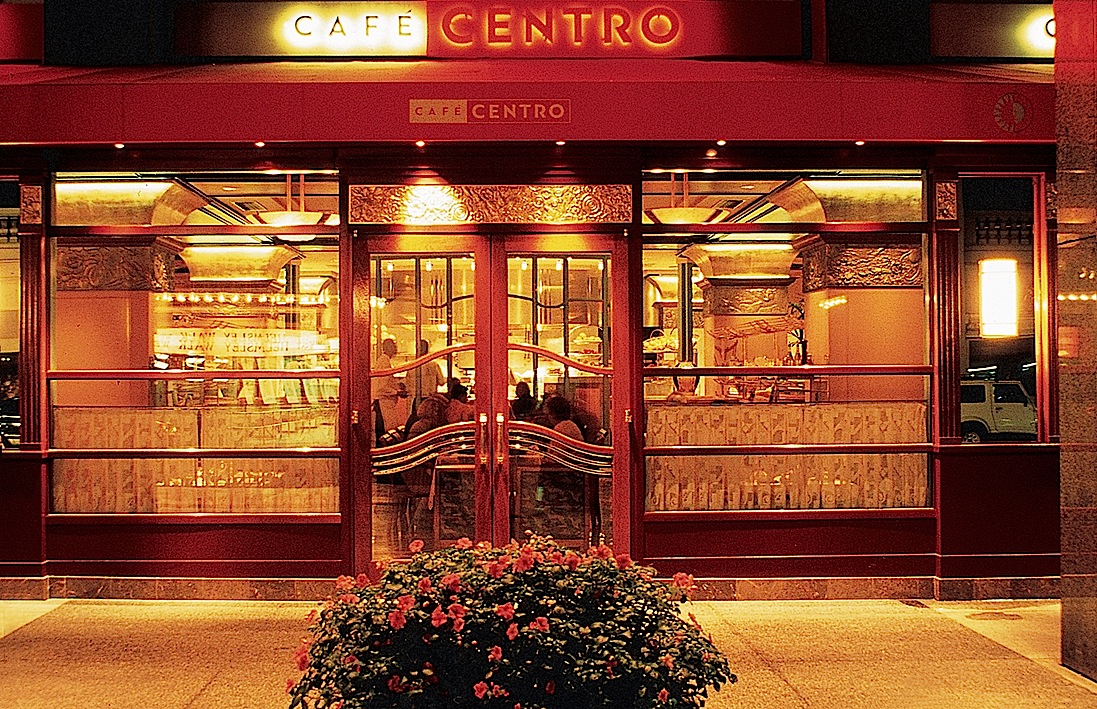 CAFÉ CENTRO
CAFÉ CENTRO200 Park Avenue
212-818-1222
www.patinagroup.com
Even under its former jet age name, the latter—before Pan Am went belly up in 1991—was never actually beloved as a NYC landmark. The damn thing was set atop the Beaux Arts beauty of Grand Central Terminal like a wedge driven through the heart of New York. In fact, that architectural rape of 1963 was what led to the city creating a Landmarks Preservation
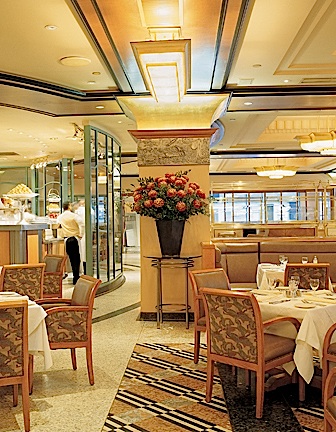 Commission in 1965.
Commission in 1965.Nevertheless, in its heyday the Pan Am Building was home to some cherished eateries, all then run by Restaurant Associates. There was Trattoria, one of the best contemporary Italian restaurants of its time, a German wurst place called Zum Zum, and the sexy Sky Club on the 56th floor. Today the restaurants in the skyscraper, now all run by the Patina Group, include Naples 45 (where Trattoria was), Cucina & Co., Fonda del Sol, and Café Centro.
Café Centro is immensely popular for all sorts of reasons, convenience of location being but one of them. During warmer months the outdoor tables are packed at lunch and dinner, and even at breakfast, as a lot of meetings are conducted here by execs from the skyscraper above. The website touts the restaurant as “a richly elegant Grand Café in the classic Parisian tradition,” which is quite true, right down to the big roomy booths, soigne art deco mural (below), white tablecloths, mirrors and brass railings (right). The menu shies away from being in any way daring, instead
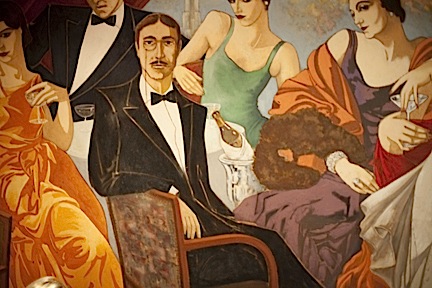 focusing on French
brasserie and Mediterranean classics that have
been honed to perfection over the years. It
gets a solid bar crowd—you can eat there—but
the bartenders still need a few lessons in
classic cocktail making.
focusing on French
brasserie and Mediterranean classics that have
been honed to perfection over the years. It
gets a solid bar crowd—you can eat there—but
the bartenders still need a few lessons in
classic cocktail making.Over two recent dinners at Café Centro, I realized what I had missed by being away so long. You might begin with a shellfish platter, shimmering on its display tier. The bread and butter are copious and excellent. The onion soup gratinée, with its bubbly, caramelized Gruyère and Comté cheese lid, needs no improvement, but it’s time to retire the plate of mozzarella and tomatoes if better tomatoes can’t be found.
Chicken bisteeya baked in buttery phyllo with toasted almonds, golden raisins, orange flower essence is much better than you might imagine—flaky, piping hot, crunchy and aromatic, while the terrine of foie gras with candied celery, rhubarb, and aged Sherry is the very soul of bistro cookery. The lobster
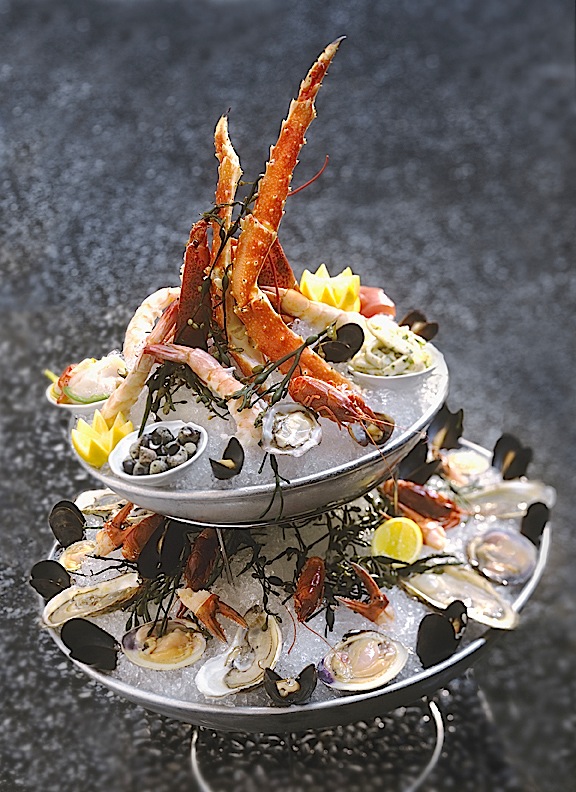 chowder, laced with crème
fraîche, is one of my favorite soups in
NYC.
chowder, laced with crème
fraîche, is one of my favorite soups in
NYC.Fillet of sole is expertly, carefully sautéed in butter with a tomato Fondue and wonderful lemon coulis, and if you love mussels, those shiny bivalves done here in white wine and garlic, or with andouille sausage, Belgian beer, and tomatoes Dijonaise, will make you very happy. You certainly won't go wrong with the admirably priced steak frites ($36) or the hefty portion of coq au vin, steaming hot and riddled with lardons, its
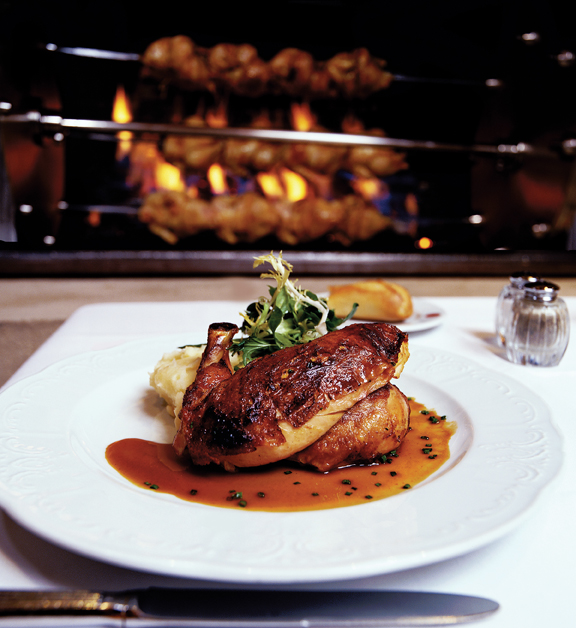 flavorful
juices seeping into the egg-rich, buttered
spaetzle and mushrooms. Seared Rib Eye Steak
Au Poivre with spicy green peppercorn sauce is
another old favorite you don’t see as much as
you used to. Roast chicken (left) is
equally as classic in its presentation as a
bistro dish beloved for obvious reasons of
good tasting comfort.
flavorful
juices seeping into the egg-rich, buttered
spaetzle and mushrooms. Seared Rib Eye Steak
Au Poivre with spicy green peppercorn sauce is
another old favorite you don’t see as much as
you used to. Roast chicken (left) is
equally as classic in its presentation as a
bistro dish beloved for obvious reasons of
good tasting comfort. Toeing the bistro line, there is, of course, apple tarte Tatin, here with maple ice cream and apple crisp, and crème brûlée together with a molten chocolate cake.
The wine list is one of the most carefully selected in the city, with dozens of wines by the glass and an amazing number of bottles under $50, just as you’d find in a Parisian bistro—good country wines too.
Grand Central Terminal is crammed full of restaurants, take-out shops, eateries, bakeries and food stores, so it is testament to Café Centro that, with so much to choose among, people return here again and again for just the right amount of cosseting, comfort and consistently good, always lovable food.
PARKING SPECIAL When you dine at Café Centro, One Parking at 200 Park Avenue offers a special rate of $25 for up to 4 hours of parking.
Open for breakfast and lunch Mon.-Fri., for dinner Mon.-Sat. Appetizers $12.50-$16.50, main courses $19-$44.
❖❖❖
FAVORITE MOVIE 
WASN'T "BRIDE OF FRANKENSTEIN"
Twin
Stars diner in Moscow, only hires sets of
identical twins (right)
as its waitstaff. Owner Alexei Khodorkovsky told
the BBC he was inspired by his favorite childhood
movie, The Kingdom of Crooked Mirrors, in
which "a schoolgirl crosses into an alternate
world and finds her twin."
 EAT YOUR
SOUP BEFORE IT CLOTS!
EAT YOUR
SOUP BEFORE IT CLOTS!
Any of John Mariani's
books below may be ordered from amazon.com.
 |
My latest book, which just won the prize for best book from International Gourmand, written with Jim Heimann and Steven Heller, Menu Design in America, 1850-1985 (Taschen Books), has just appeared, with nearly 1,000 beautiful, historic, hilarious, sometimes shocking menus dating back to before the Civil War and going through the Gilded Age, the Jazz Age, the Depression, the nightclub era of the 1930s and 1940s, the Space Age era, and the age when menus were a form of advertising in innovative explosions of color and modern design. The book is a chronicle of changing tastes and mores and says as much about America as about its food and drink.
“Luxuriating vicariously in the pleasures of this book. . . you can’t help but become hungry. . .for the food of course, but also for something more: the bygone days of our country’s splendidly rich and complex past. Epicureans of both good food and artful design will do well to make it their coffee table’s main course.”—Chip Kidd, Wall Street Journal.
“[The menus] reflect the amazing craftsmanship that many restaurants applied to their bills of fare, and suggest that today’s restaurateurs could learn a lot from their predecessors.”—Rebecca Marx, The Village Voice. |
"Eating Italian will never be the same after reading John Mariani's entertaining and savory gastronomical history of the cuisine of Italy and how it won over appetites worldwide. . . . This book is such a tasteful narrative that it will literally make you hungry for Italian food and arouse your appetite for gastronomical history."--Don Oldenburg, USA Today. "Italian
restaurants--some good, some glitzy--far
outnumber their French rivals. Many of
these establishments are zestfully described
in How Italian Food Conquered the World, an
entertaining and fact-filled chronicle by
food-and-wine correspondent John F.
Mariani."--Aram Bakshian Jr., Wall Street
Journal.
"Equal parts
history, sociology, gastronomy, and just
plain fun, How Italian Food Conquered the
World tells the captivating and delicious
story of the (let's face it) everybody's
favorite cuisine with clarity, verve and
more than one surprise."--Colman Andrews,
editorial director of The Daily
Meal.com. "A fantastic and fascinating
read, covering everything from the influence
of Venice's spice trade to the impact of
Italian immigrants in America and the
evolution of alta cucina. This book will
serve as a terrific resource to anyone
interested in the real story of Italian
food."--Mary Ann Esposito, host of PBS-TV's
Ciao
Italia. "John Mariani has written the
definitive history of how Italians won their
way into our hearts, minds, and
stomachs. It's a story of pleasure over
pomp and taste over technique."--Danny Meyer,
owner of NYC restaurants Union Square Cafe,
Gotham Bar & Grill, The Modern, and
Maialino.
|
 |
 |
 |
 |
 |
 |
 |
 |
 Everett Potter's Travel Report:
Everett Potter's Travel Report: 
 Eating Las Vegas
is the new on-line site for Virtual Gourmet
contributor John A. Curtas., who since 1995
has been commenting on the Las Vegas food
scene and reviewing restaurants for Nevada
Public Radio. He is also the
restaurant critic for KLAS TV, Channel 8 in
Las Vegas, and his past reviews can be
accessed at KNPR.org.
Click on the logo below to go directly to
his site.
Eating Las Vegas
is the new on-line site for Virtual Gourmet
contributor John A. Curtas., who since 1995
has been commenting on the Las Vegas food
scene and reviewing restaurants for Nevada
Public Radio. He is also the
restaurant critic for KLAS TV, Channel 8 in
Las Vegas, and his past reviews can be
accessed at KNPR.org.
Click on the logo below to go directly to
his site.

Tennis Resorts Online: A Critical Guide to the World's Best Tennis Resorts and Tennis Camps, published by ROGER COX, who has spent more than two decades writing about tennis travel, including a 17-year stretch for Tennis magazine. He has also written for Arthur Frommer's Budget Travel, New York Magazine, Travel & Leisure, Esquire, Money, USTA Magazine, Men's Journal, and The Robb Report. He has authored two books-The World's Best Tennis Vacations (Stephen Greene Press/Viking Penguin, 1990) and The Best Places to Stay in the Rockies (Houghton Mifflin, 1992 & 1994), and the Melbourne (Australia) chapter to the Wall Street Journal Business Guide to Cities of the Pacific Rim (Fodor's Travel Guides, 1991).


MARIANI'S VIRTUAL GOURMET
NEWSLETTER is published weekly. Editor/Publisher: John
Mariani.
Contributing Writers: Christopher Mariani, Robert Mariani,
John A. Curtas, Edward Brivio, Mort Hochstein,
Suzanne Wright, and Brian Freedman. Contributing
Photographers: Galina Stepanoff-Dargery,
Bobby Pirillo. Technical Advisor: Gerry McLoughlin.
© copyright John Mariani 2013
